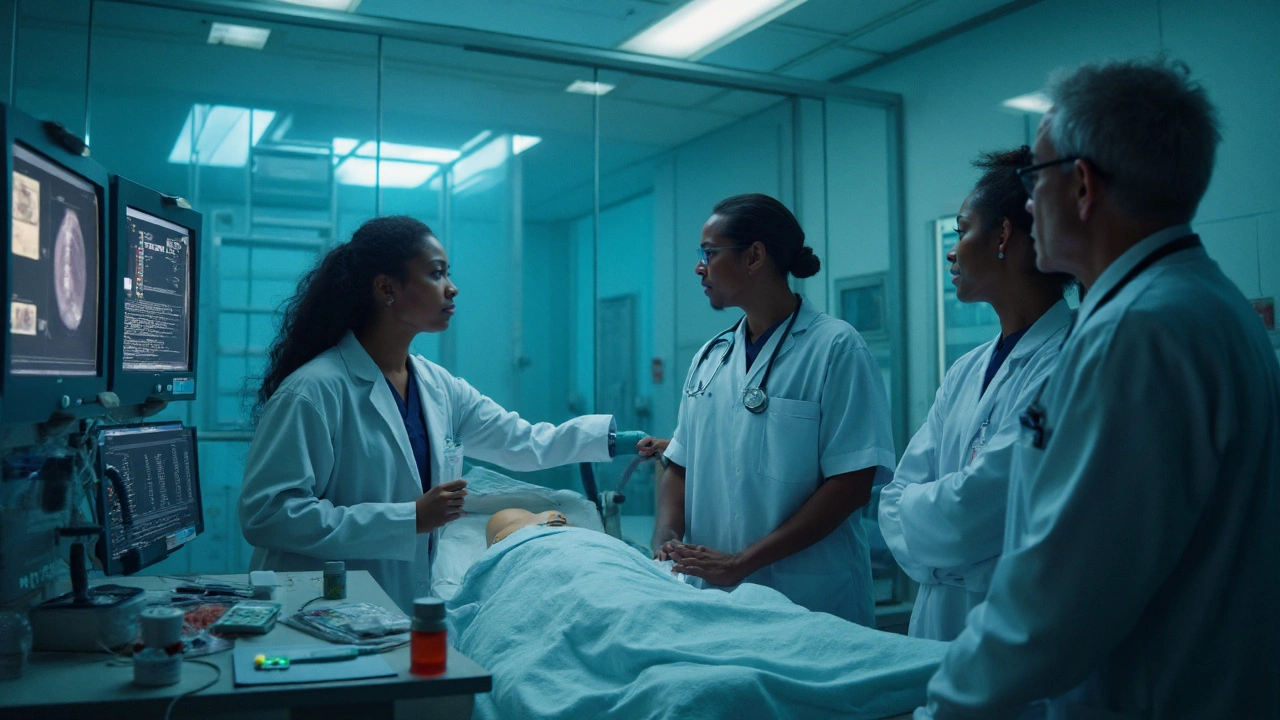Hospital‑Acquired Pneumonia: Quick Guide for Patients and Caregivers
Ever wondered why some people get a lung infection after a hospital stay? That’s called hospital‑acquired pneumonia, or HAP. It pops up at least 48 hours after you’re admitted, and it isn’t something you caught before you arrived. Knowing the basics can help you spot it early and get the right care.
What Is Hospital‑Acquired Pneumonia?
HAP is a lung infection that develops while you’re in the hospital, often because germs sneak in through breathing tubes, ventilators, or even a sore throat. The most common culprits are bacteria like Pseudomonas aeruginosa and Staphylococcus aureus. These bugs love the moist, warm environment of a hospital ward.
Typical signs show up suddenly: a fever over 100.4°F (38°C), chills, a cough that brings up sputum, shortness of breath, and chest pain that hurts when you breathe. Sometimes you might feel confused, especially if you’re older. If you notice any of these, tell a nurse or doctor right away.
How to Prevent and Treat HAP
Prevention starts with simple habits. Nurses often raise the head of the bed to 30‑45 degrees; this helps fluids drain away from the lungs. If you’re on a ventilator, the care team will do regular oral care and change tubes frequently. For you, asking that they keep your mouth clean and that they remove breathing tubes as soon as it’s safe can make a big difference.
If HAP does develop, doctors usually order a chest X‑ray and sputum tests to pinpoint the bug. Antibiotics are the main treatment, but the exact drug depends on the bacteria you have and any allergies you might have. The course typically lasts 7‑14 days, and you’ll get follow‑up X‑rays to make sure the infection’s clearing.
While on antibiotics, stay hydrated, rest, and breathe deep to clear mucus. A humidifier or a gentle incentive spirometer (a small device that encourages deep breaths) can help keep your lungs open. If you have a chronic condition like COPD, keep your regular inhalers handy and use them as prescribed.
After you leave the hospital, keep an eye on any lingering cough or fever. If symptoms return, call your doctor fast – sometimes an infection can come back if it wasn’t fully cleared.
Bottom line: Hospital‑acquired pneumonia is a serious but treatable infection. Spotting the symptoms early, pushing for good hygiene practices, and following the treatment plan can get you back on your feet faster. Stay proactive, ask questions, and don’t hesitate to speak up if something feels off during your hospital stay.
Linezolid for Nosocomial Pneumonia: Evidence, Dosing, and When to Use It (HAP/VAP)
Does linezolid work for nosocomial pneumonia? Evidence, dosing, when to choose it over vancomycin, risks, and practical protocols for HAP/VAP in 2025.
